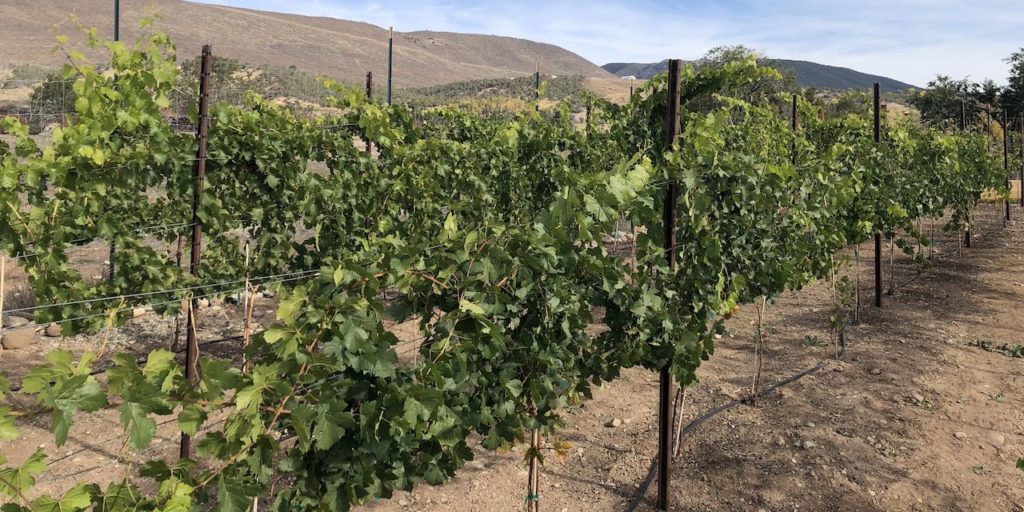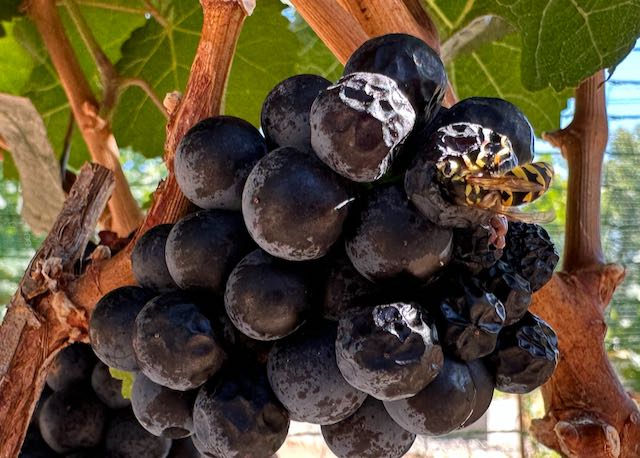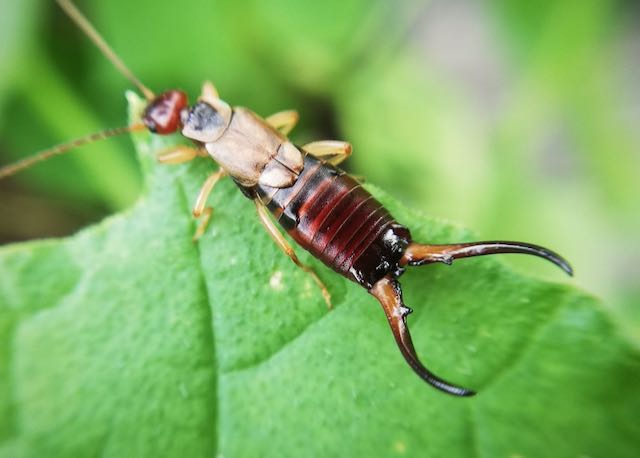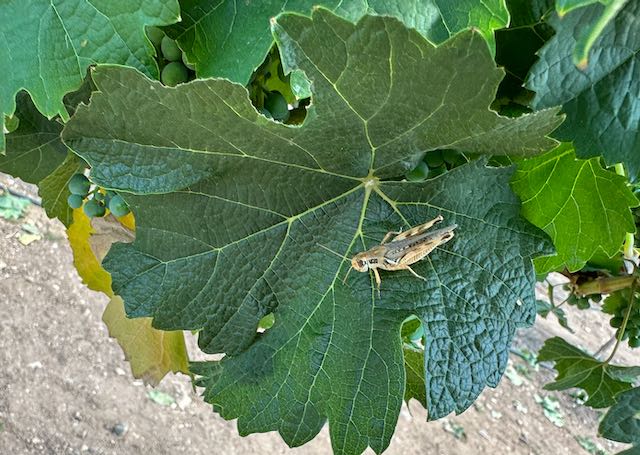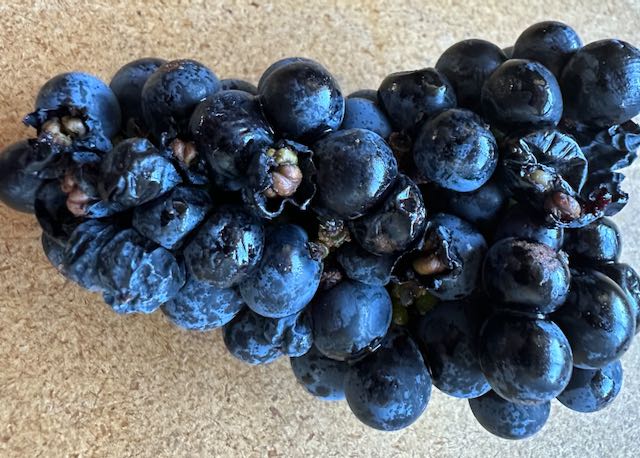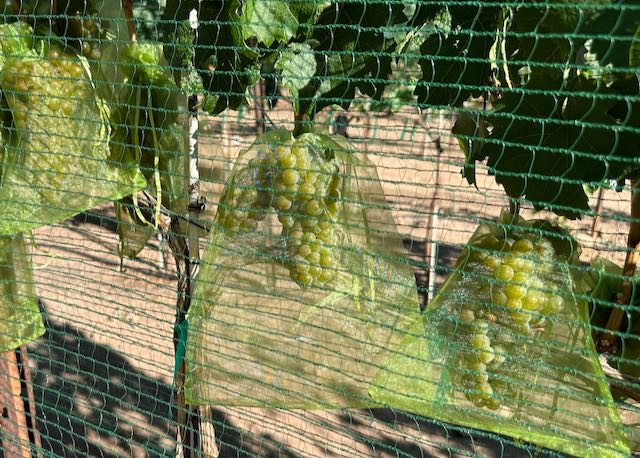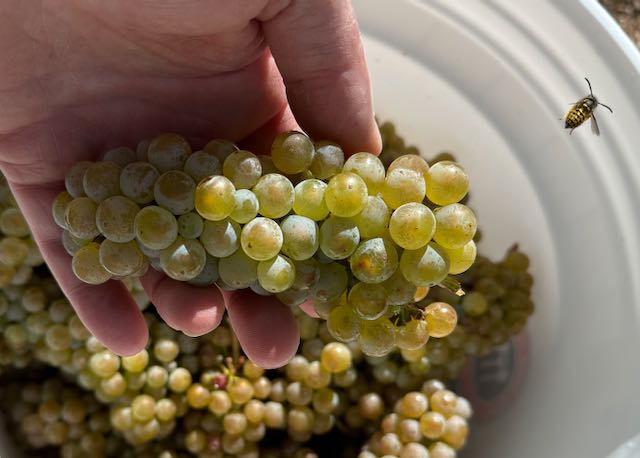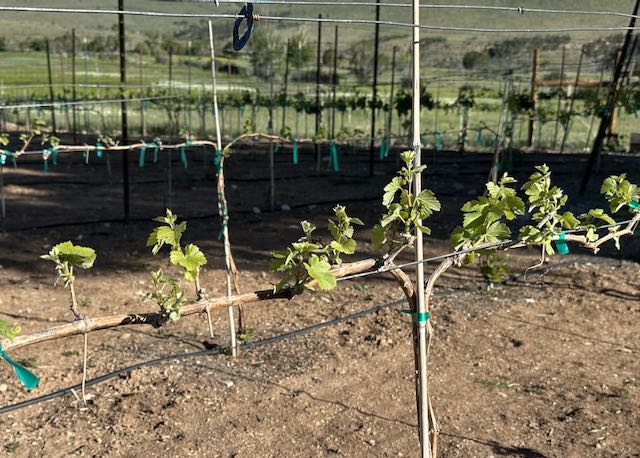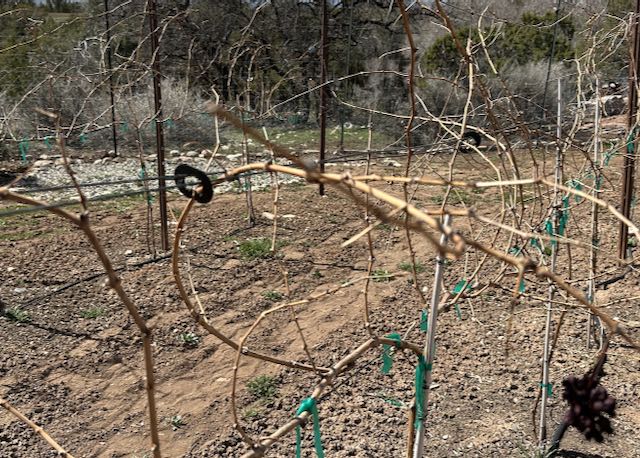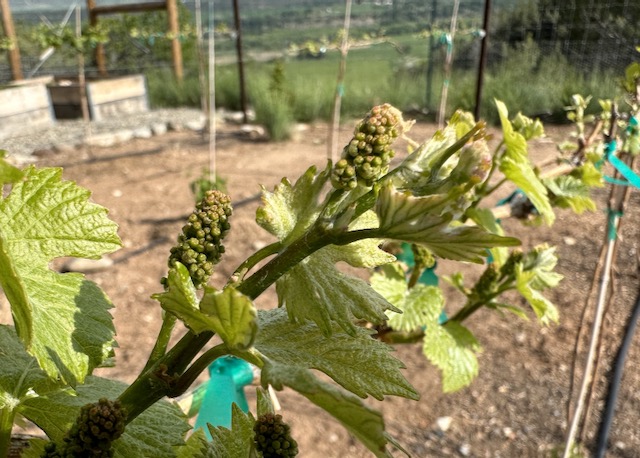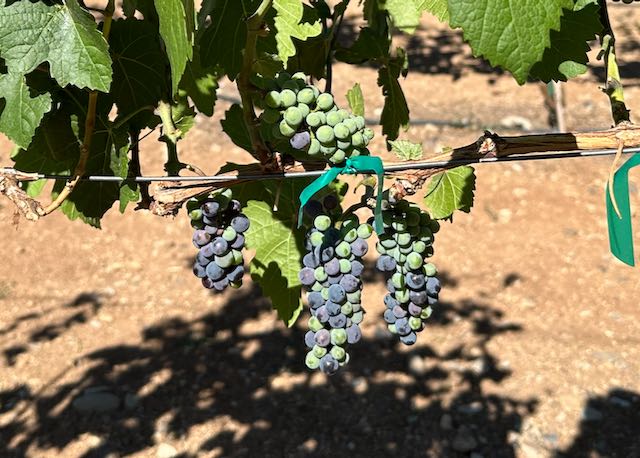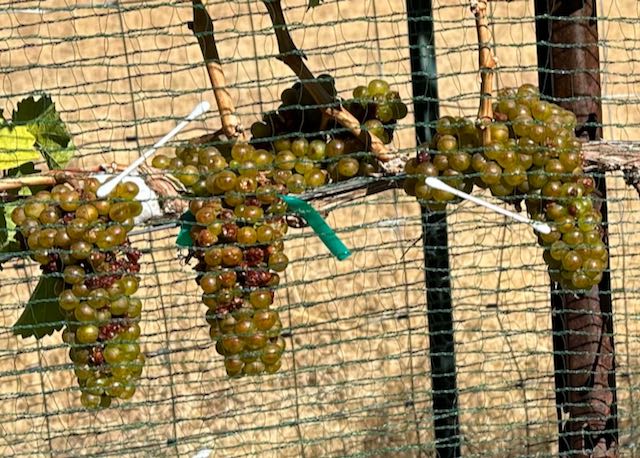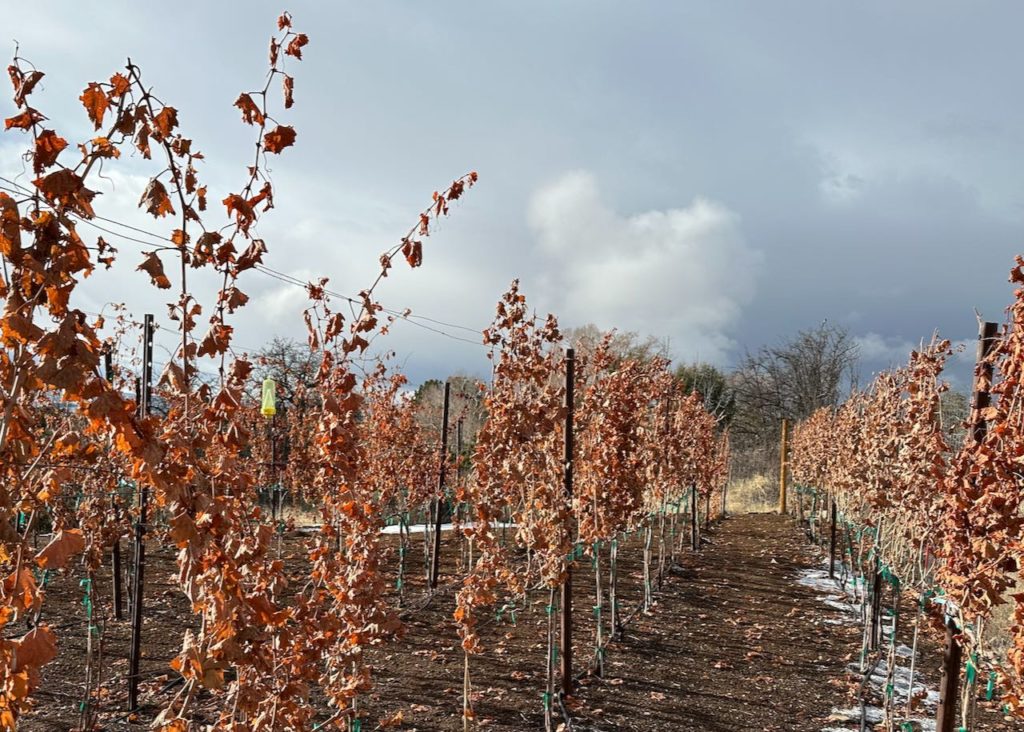
November & December - 2023 Vineyard Lessons Learned
I have a Doctorate from the University of Hard Knocks.
You read up on new subject matter and spend time learning from those more knowledgeable than you. But the wealth of information means little—oh sure, you can do well conversing about the topic at cocktail parties—till you are knocked around attempting new things yourself.
Reflecting on the year is what this last episode of the 2023 Vineyard Chronicles is about. My personal take covers real-life lessons and takeaways, hard knocks, successes, and all.
It’s a good time to reflect. A new season begins soon. 2023 vineyard seasonal activities came to a close with October’s Chronicle. Winterization was complete followed by cold temps and a hard freeze on October 30. The vines moved to dormancy.
Uber Lesson One
"The best fertilizer is the growers footprint in the vineyard"
- Old Proverb -
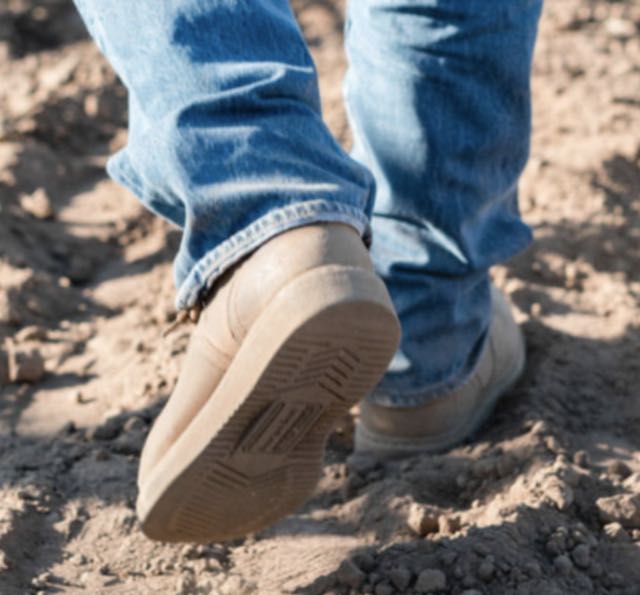
As my third-year vineyard and first with grapes made abundantly clear, time and time again, daily observational strolls are indispensable in tending to the overall health of a vineyard.
There are many routine task-filled days. Just because you’ve “checked those boxes”, shouldn’t translate to extended days off.
Adding grapes to the vineyard equation compounded the need for careful monitoring, and as required subsequent actions.
At times, initial worrisome observations were nothing to be concerned with—as with the “grape pearls” discovered and reported on in May’s Chronicle (below).
Other discoveries beginning innocuously, ended up requiring extensive remedies and time. A Yellow Jacket invasion case in point (find coverage beginning in the August Chronicle).
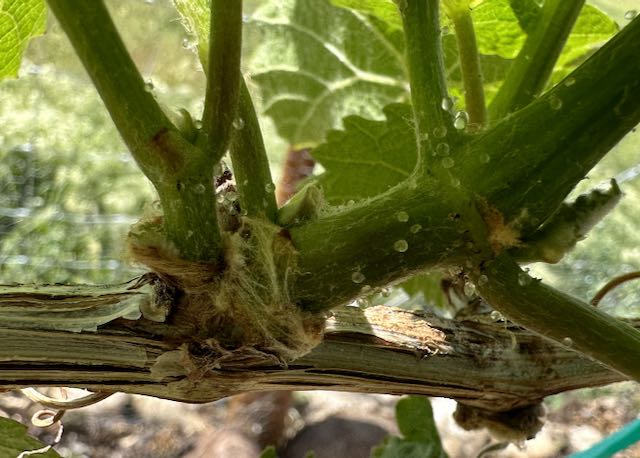
As you walk (and work), you’re observing and asking questions regarding every aspect of the vineyard continually examining the vines, leaves, grapes, ground, trellis, and critters.
Do certain leaves exhibit discoloration (possible nutritional deficiencies or disease, biological or viral)? Are there black or white splotches on the vines and/or leaves (potential mildew or black rot)? Are there insects or animals about, and what are they doing (maybe depositing eggs, eating, or mating)?
You don’t know what you’ll discover till you observe it.
And needless to say, developing courses of action when warranted is what keeps the vineyard evolving towards continued health, and fruitful harvest.
Uber Lesson Two
"An hour of planning can save you 10 hours of doing"
- Dale Carnegie -
Yellow Jackets, Caterpillars, Grasshoppers, and Earwigs… I lacked a plan for dealing with invasive fauna. Each requires different deterrents.
Not unlike tomato Hornworms, my vineyard Caterpillars munched away at young tender leaves along vines in early summer. Following my daily routines I’d plucked the fat dudes from the vines, and make use of a pair of sharp shears cutting them in half.
Only the first time was I freaked by what spilled out.
Earwigs settle within grape clusters. Left to their own devices, they can damage grapes but they also eat pests. If not controlled, Earwigs end up in the harvest bin in amounts affecting the resulting wine (ouch).
Applying diatomaceous earth (DI) as an organic measure along the grape growth wire serves as a control. Earwigs digest the DI, leaving their digestive system a wreck.
As exhaustedly reported in previous Vineyard Chronicles, the hardest knock I experienced this season was Yellow Jackets. They were not to be denied an opportunity to suck the nectar out of every single grape in the vineyard.
They destroyed half my Pinot Noir crop and probably a quarter of the Riesling.
Next season’s preventative action number one, involves setting out traps beginning in early April as winter breaks. The traps capture emerging queens waking from winter hibernation. They are slightly larger than the workers, so you know when you’ve caught one. Killing the queens early in the season reduces the number of nests, and in turn, the eggs that mature into adult Yellow Jacket nectar-sucking workers.
The plan involves strategically placing traps around the perimeter of the vineyard and in trees around the landscape and surrounding fields. Queens within 100 yards of the vineyard won’t be able to buzz around without bumping into a trap.
After spring deployment, the traps must be kept baited with pheromone for the remainder of the season. As this season was ending, I had success purchasing half a gallon of pheromone. The volume purchased will save me a couple of hundred dollars in “little packet” pheromone you buy at hardware stores and will last a few years to boot.
Experimenting with meat as bait is also planned.
The traps will remain around the perimeter of the vineyard and not placed among the vines, where the black and yellow pests can be distracted by sugar-gaining grapes later in the season.
At Veraison beginning in August, grapes begin turning color as they gain sugar. This is when the Yellow Jackets begin taking notice. Care will be taken not to accidentally break grape skins exposing the sweetening juice. Plucking grape leaves fully exposing grape clusters will also not occur.
If the hordes come anyway, barrier protection will be gained by deploying tight-weaved bags around each grape cluster. Bag deployment saved much of my Riesling crop. While a time-consuming task, it works.
Lastly, if the plan has limited effect in the 2024 season, deploying row-by-row insect netting in 2025 will provide the ultimate solution. Netting also pulls double duty protecting from birds, who begin their onslaught late in the summer.
A grower has to do what a grower must.
"Sometimes our stop-do list must be bigger than our to-do list"
- Patti Digh -
clusters promoting airflow and sunshine—akin to waving a red cape to attract a bull for keen sighted Yellow Jackets.
So instead, what are the activities leading to positive outcomes that should be pursued next season?
To be clear, my activities are not meant to provide a comprehensive A – Z list of annual routine vineyard tasks. The items below are personal to my learning experiences this season—remember, my school of hard knocks.
More thorough lists you’ll find beginning with this high-level simplified version, and this commercial calendar take.
And if you haven’t come across it yet, you’ll find detailed vineyard information, with annual maintenance accounts on my website via The Vineyard page—feel free to help yourself.
Without further ado, My lessons from winter to fall...
FOLLOW my Ubers above—walk the vineyard daily and have a plan. A plan for everything, including routine tasks and seasonal timings.
PRUNE as the weather allows—before bud break—in April. Leave four buds on each shoot. Once the threat of spring freeze is gone and if the two lower buds are healthy (.i.e., not nipped by a freeze), cut away the two upper buds on each shoot—it doesn’t matter if the buds are sporting emerging leaves. This suggestion is specific to the Vertical Shoot Positioning training approach. See the vine diagram below, which uses “spur” in place of “shoot”.
REPAIR the trellis wires and tighten them after pruning and before the vine bud break. I constantly had to mess around with the wires all season. Better to get much of the work completed before the trellis is loaded up.
WEED, weed, then weed some more. My vineyard is bare soil with rocks. Weeding with a hoe requires muscle due to rocks. Keep at it through June because by this point, the weeds are tired of the hoe and they tend to give up.
MAINTAIN a powdery mildew spraying program. Check with the local farm extension office or local growers for what works in your area. During my second-year vineyard season, I mistakenly didn’t spray.
Remember, I have a doctorate.
When pruning in the spring, I came across small black splotches along many of the vines—overwintered mildew. I sprayed in April to control what I hadn’t last year, and maintained a rigorous program for the season.
PLUCK leaves from around the grape clusters but not too early in the season.
Plucking assists airflow around the clusters discouraging mildew. It also promotes greater sun exposure to the grapes, which is beneficial late season when ripening needs to be moved along.
Plucking too early in the season—only those with doctorates engage in this practice—promotes sunburned grapes.
Take…my…word…for…it.
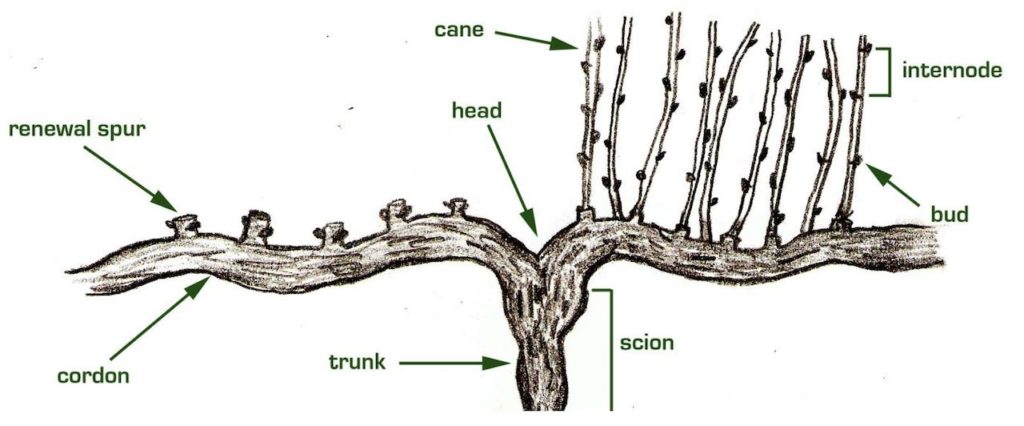
MAINTAIN a consistent vine pruning program all season long. When using the Vertical Shoot Positioning vine training system (above, sans leaves and grapes for easy reference), pay attention to the following five pruning approaches:
1) leave two to three buds along the lower portion of each spur; 2) to the degree possible, space spurs and resulting canes a “hand-fist” apart; 3) each vine cane should have two grape clusters, with 25 to 35 supporting leaves in the canopy; 4) cut-away lateral growing canes from the vertical canes—the lateral growth promotes excessive green growth over grape development; and 5) if vines grow taller than six to seven feet late in the summer, top them off—once again, grape development over green.
LATE in the season, note vine issues and flag them. This enables you to follow the issues in the spring, helping to affirm whether corrective action is required.
PLAN to fill vine row gaps the following season by identifying problem vines. Take vine cuttings to grow roots for planting or order grafted rootstock for spring delivery.
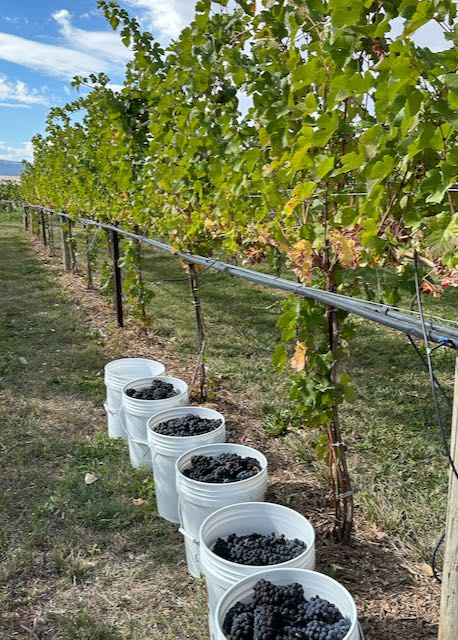
AND BY ALL MEANS, enjoy the fruits of your labor at harvest time!
You’ve worked hard to get to this point, now the fun begins.
Watch the grape numbers—Brix (sugar), pH (the measure of the degree of relative acidity), and TA (total acidity).
Pick when the numbers are right for the grape and the desired wine type.
Remember, after all this hard work you need to reap what you’ve sown!
My hope is you’ve found the 2023 Vineyard Chronicles series informative.
As expressed with several of this year’s Chronicle entries my intent is to learn by doing, passing the real-life experiences and lessons along to you.
Hard knocks and all.
As you can imagine, there are many more details than summarized in my writings.
Don’t hesitate to use the site’s Reach Out form or write Comments below to inquire further. I’m at your disposal.
This is my life encore, one I’m passionate about.
See you in next year’s vineyard!
